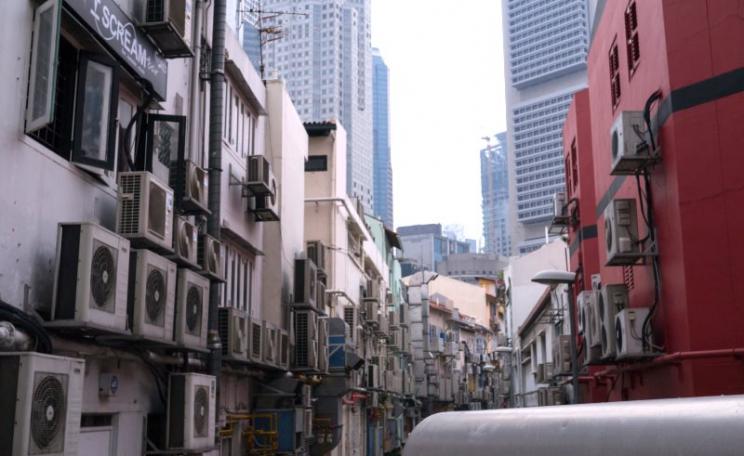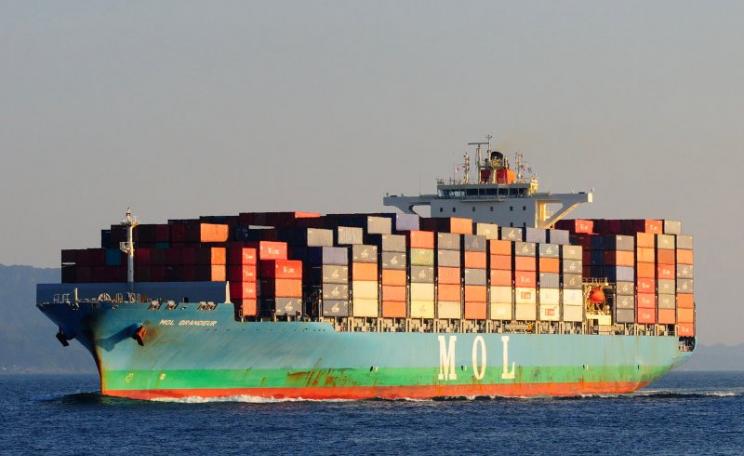If we're serious about tackling industrial pollution and CO2, a change is needed in our relationship to - and definition of - waste. Our existing linear approach is a relentless march towards landfill and atmospheric pollution.
In a recent article on The Ecologist, researchers from the Universities of Hull and Leeds described how almost two billion tonnes of untreated caustic materials are being sent to landfill around the world.
The waste is causing environmental degradation, contamination of water supplies and even human catastrophe. Yet, many of these wastes can be effectively neutralised while permanently sequestering CO2. Indeed, new businesses are already making a profit from cleaning up hazardous waste and CO2 at the same time.
The failure of many industries to do so is down to a lack of knowledge and inadequate regulation. Tackling this problem calls for policy intervention - we cannot wait until the next avoidable tragedy to enact a change in behaviour.
Once, it seemed there was so much empty space surrounding us that anything could be disposed of anywhere. No longer: what goes around comes around. So what happens when we find ourselves face-to-face with the unwanted dregs of yesteryear?
A recent attempt to clean up an abandoned gold mine in Colorado led to the release of some 3 million gallons of water into the Animas River. Last month, toxic substances found seeping into a river near Sudbury, Canada were traced to slag storage piles from a local steel mill.
And in all corners of the planet, millions of tonnes of hazardous coal ash are being kept in unlined ponds or dumped in abandoned mines; an ever growing number of accidents waiting to happen.
And the scale of the emissions reductions to be made in this way is well worth having: about 1 gigatonne per year of CO2, or 3% of the world's industrial emissions from fossil fuels and cement manufacture.
The answer: neutralise caustic wastes and sequester CO2 in a single step
Dealing with each incident costs tens of millions of dollars and, all over the world, government agencies have spent billions upon billions of dollars cleaning up the environmental damage caused by poorly managed legacy assets.
Fortunately, we have the means to deal with these wastes. Mineral carbonation, a process whereby alkali waste materials are reacted with CO2, neutralises caustic materials and yields useful products. The technology for using alkali wastes to sequester CO2 (also known as Carbon Capture and Utilisation) has been in commercial development for some time.
If we're serious about tackling industrial pollution and CO2, a change is needed in our relationship to - and definition of - waste. Our existing linear approach is a relentless march towards landfill and atmospheric pollution.
Carbon8 (UK) and Innovation Concepts in the Netherlands are just two examples of businesses that make a profit from turning wastes into secondary raw materials that are sold to the construction sector and chemicals industries. Combining harmful industrial wastes with CO2 from flue gas emissions to produce inert materials is a no-brainer and yet only a handful of companies are doing this. Why?
My colleagues at Sandbag recently released a report on mineralisation and the emerging CO2 economy. In it we described how regulatory barriers to the major markets for waste-to-product processes have prevented companies from valorising their waste streams.
Mineralisation is not yet recognised in the EU's climate policy framework and several key Member States persist with the traditional cradle-to-grave line of thinking - even barring companies from processing hazardous wastes once they have been landfilled.
Companies that mineralise alkali wastes also struggle to obtain permits to collect waste material from neighbouring countries due to restrictions on the transport of hazardous materials. It is an all too familiar case of the status quo having been conveniently enshrined in waste management policy.
We also found there are few standards on the carbon intensity in the construction and chemicals sectors with no significant demand-side incentives for intermediate consumers to choose materials that have a lower carbon footprint.
Time to ditch linear thinking on industrial waste
Entrenched practices in the construction sector have bred an aversion towards using new, albeit certified, low-carbon alternatives even where their lifetime performance outstrips that of conventional materials. Such is the inflexibility of the market. A big push towards low carbon standards is therefore needed to drive adoption.
If we're serious about tackling industrial pollution and CO2 emissions, then a change is needed in our relationship to - and definition of - waste. Our existing linear approach is a relentless march towards landfill and atmospheric pollution.
Recycling is an ingrained habit for many of us so why aren't major industries obliged to do the same when the environmental impact of disposing of their wastes is far more pronounced? Cost and competitiveness are their usual reasons but the fact that mineralisation has been commercialised proves that where there is a will there is a way.
We will not achieve positive change until waste disposal and greenhouse gas emissions are viewed as avoidable, rather than an inevitable fate - it is high time industry closed the loop on their waste. To encourage them, EU climate and energy policies need to start incentivising investments in projects that lock up emissions from industrial sectors.
We have done a lot to bring on investment in renewables in the EU - we urgently need to do the same for innovative carbon storage solutions in industrial sectors.
Of course it's far too late to get the topic onto the agenda for COP21 in Paris - but the climate summit does offer an opportunity for industry, governments and regulators to take first steps towards exploiting these huge emissions cuts in years to come.
The report: 'The CO2 Economy - Mineral Carbonation Technology Overview' was published by Sandbag in October 2015.
Wilf Lytton is Policy Analyst at Sandbag.




